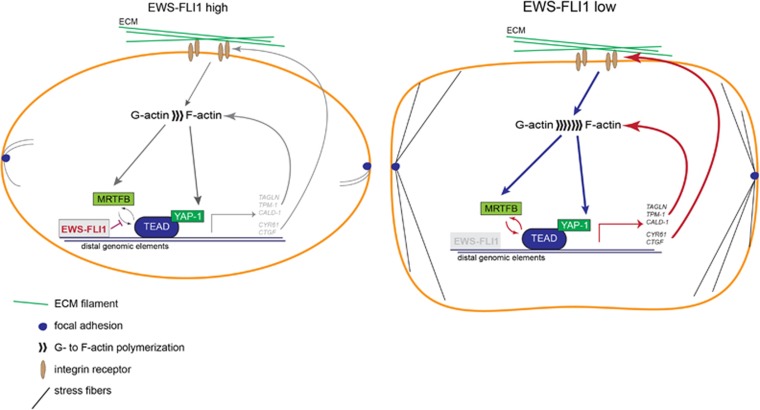Figure 6.
Model of Rho/F-actin pathway repression by EWS-FLI1 via MRTFB/YAP-1/TEAD transcriptional perturbation. A673/TR/shEF: left: EWS-FLI1-low state: EWS-FLI1 binds to distal genomic elements of EWS-FLI1-anticorrelated target genes and thereby likely hinders MRTFB/YAP-1/TEAD interaction and transcriptional activation of genes involved in actin–cytoskeletal structure (TAGLN, TPM-1 and CALD-1) or are involved in binding to the extracellular matrix (ECM) and insulin growth factors (IGF; CYR61, CTGF). Low expression of these genes might affect cytoskeletal integrity due to compromised actin polymerization and upstream signalling via ECM–receptor interactions. As a consequence, cells exhibit few focal adhesions and stress fibres (F-actin filaments) and F-actin polymerization is reduced.9, 10 Right: upon knockdown of EWS-FLI1 (EWS-FLI1-low), expression of MRTFB/YAP-1/TEAD target genes, which regulate cytoskeletal key factors, is increased and thereby likely promoting signalling via Rho both upstream and downstream of actin polymerization. Consequently, cell morphology is drastically altered with increased numbers of focal adhesions and stress fibres as compared to the high EWS-FLI1 cell state.

